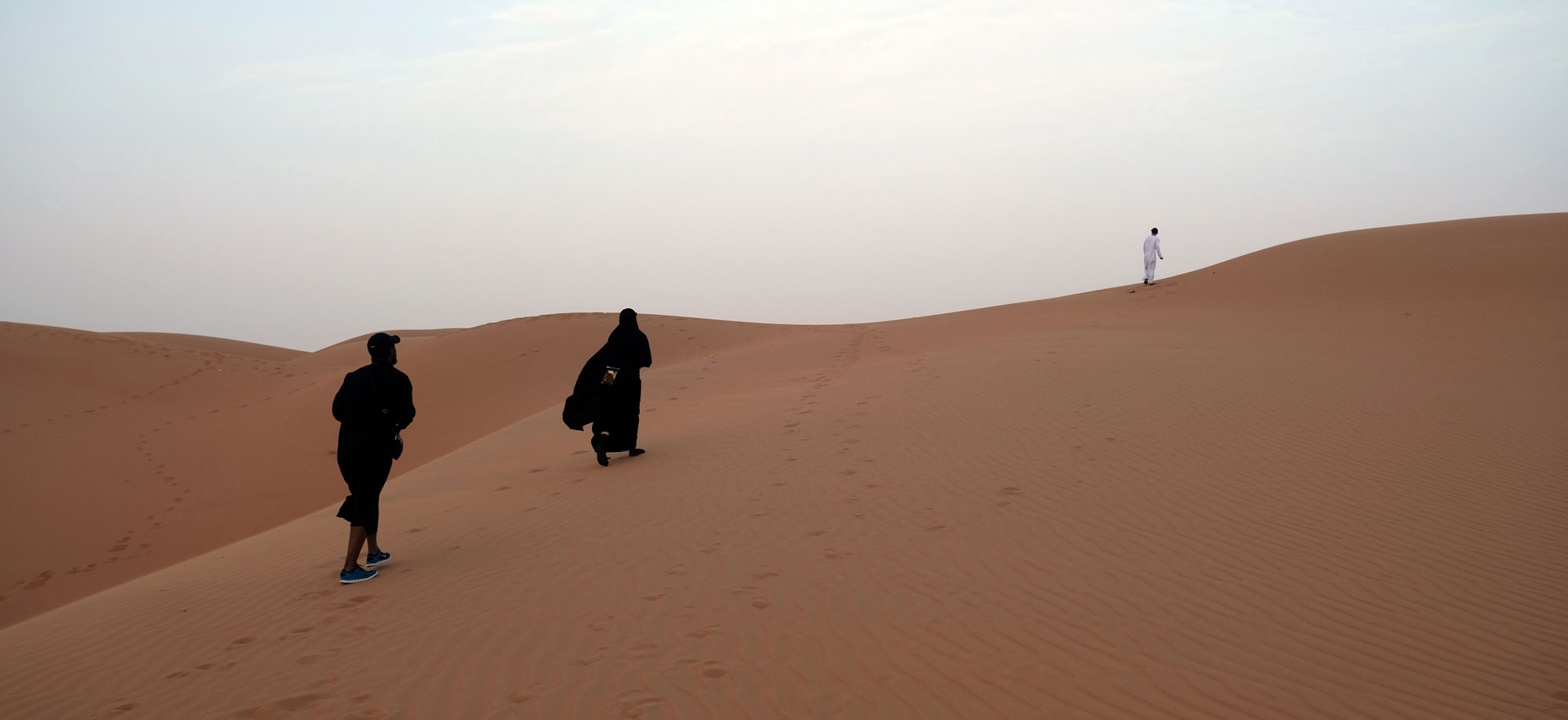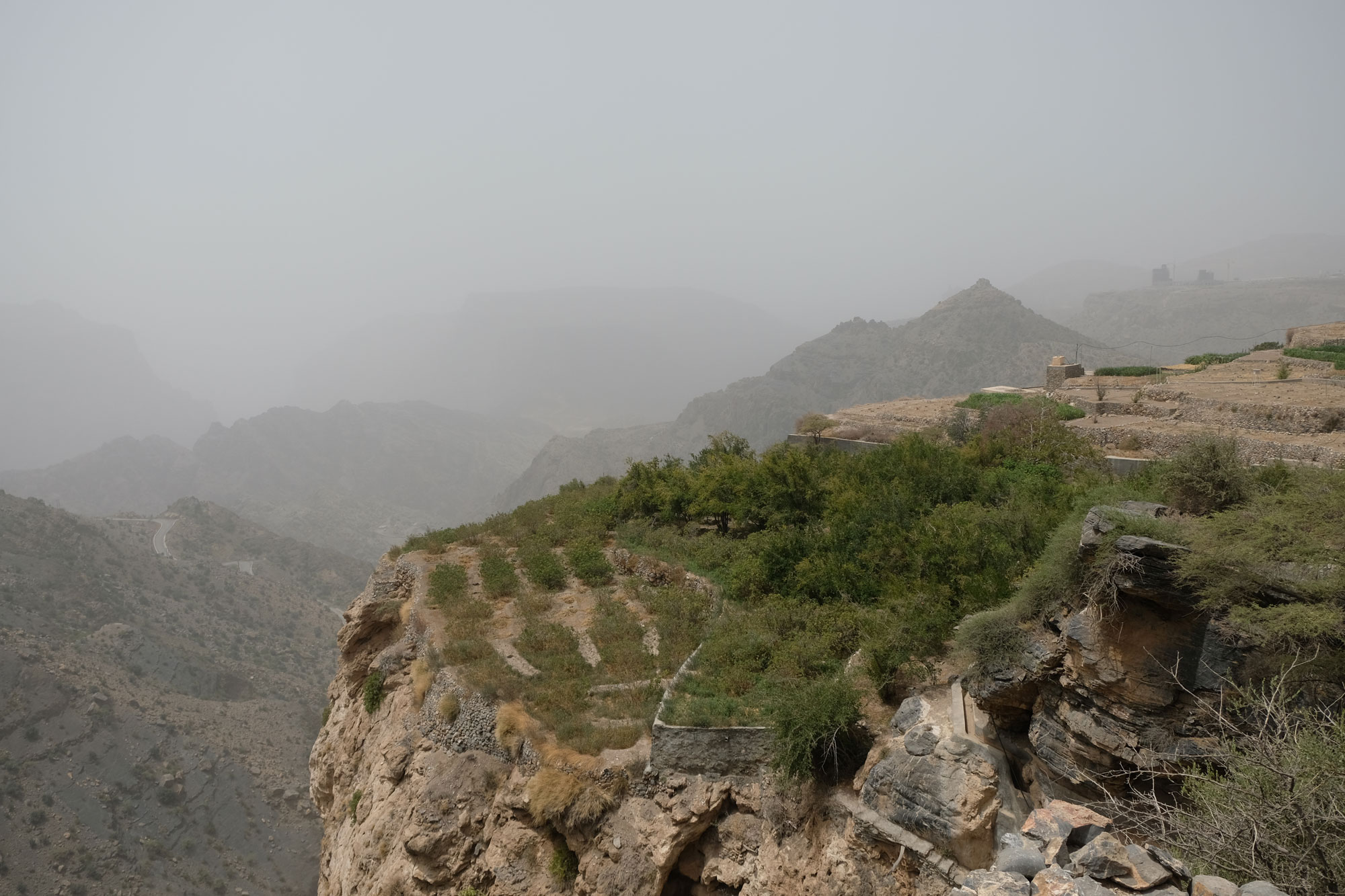Oman – it is hot
When the present-day sultan of Oman, Sultan Qaboos bin Said al Said, ousted his father in a palace revolution back in July 1970, the then 29-year old, now monarch, embarked on a project to modernize the impoverished nation.
The day that Sultan Qaboos took over is called Renaissance Day, the blessed day which marks his first day of reign, according to official annals. Fifty years ago, Oman was a poorly developed country, severely lacking in infrastructure, healthcare, and education, with only six kilometres of paved roads and a population dependent on subsistence farming and fishing.
Today it is among the 30 richest countries in terms of GDP per capita, with a state-of-the-art infrastructure and four-lane motorways crisscrossing the country. All in an area that roughly equals that of Italy. It is clean and efficient, and with hardly any rubbish around – and no graffiti.
Official statistics says there are close to five million inhabitants, so vast areas of the country are unpopulated. Indeed, the country is mostly desert and even the coastal areas are semi-arid.
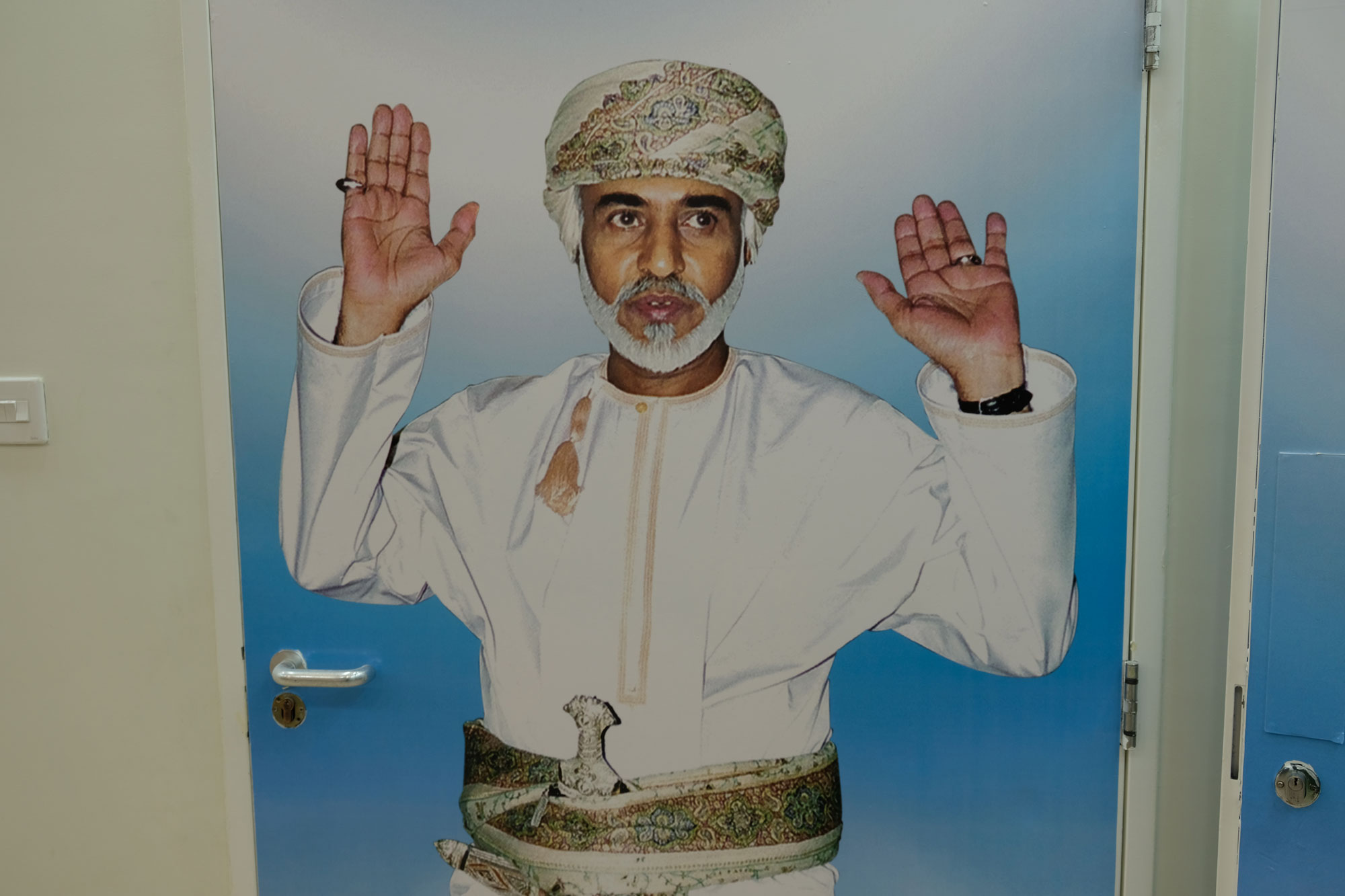
The Sultan.
Oman is a conservative country, and both men and women dress traditionally—meaning white kaftan for men and black for women, with hijab or niqab. However, its expatriate population is ever increasing and constitute a larger proportion by the day. While it ten years ago was about one third, it is now around half. As a visitor, most of the people you come across are immigrant workers; Indians, Nepalis, and Filipinos staff the hotel and restaurants, petrol stations and other services, while Bangladeshis work the roads. The waiter in the breakfast room the first morning after I arrived was from Tamil Nadu in India, and he told me he learned to speak Hindi only after coming to Oman.
I arrived from Ístanbul shortly after midnight in the peak of the hot season – in August. Forecasts predicted close to 40 degrees in Muscat with even higher temperatures in the inland part of the country. If one could stomach the heat, the perks of travelling in the off-season are you have most of the sightseeing areas to yourself. Oman is not a backpacker destination, here are no banana pancakes in sight. The country is mostly for people interested in culture and/or adventure—although there are some excellent beaches. For party holidays look elsewhere, but alcohol is available for non-Muslims in certain hotels.
However, immigration was smooth, and after picking up my rented saloon car at the airport, driving to the Marina Hotel in Muttrah was fairly easy. It was a four-lane highway almost to the doorsteps of the hotel. I picked this hotel due to its proximity to the fish market and the old souq – Arabic for a market place. The hotel has a nice view from its roof top restaurant, overlooking the harbour with the sultan’s anchored yacht and the new fish market, a modern building that was designed by the Norwegian architect team Snøhetta.
The Marina Hotel in Mutrah is an overpriced establishment at OMR 21.000 (a little over USD 50) a night, including a standard breakfast fare at 07:45, but not always. Sometimes the chef cum waiter arrives late for work. Coffee, orange juice, toast and dry omelette. The room I was assigned (405) was very small, with low pressure in the shower tap and no really cold water. Air conditioning was too strong and there is Wi-Fi only in the reception area, at times hopeless, at times not working.
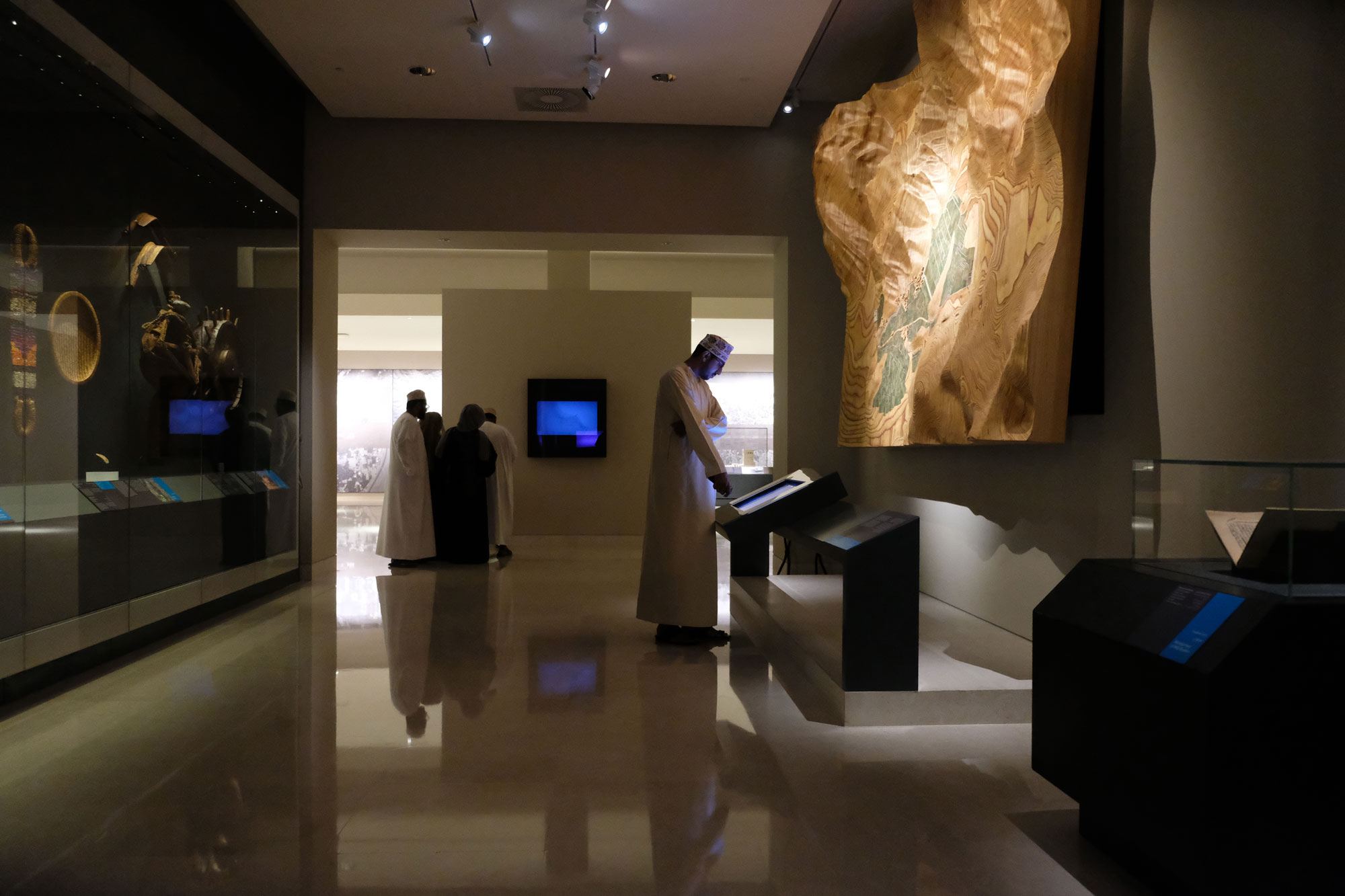
The choice of this hotel was to be close to the souk and the fish market, which is liveliest in the early hours of the morning. The souk was just a few hundred metres away, but with the high humidity in the coastal region I was soaked in sweat after only a minute or two walking towards the market. Surprisingly the souq was relatively cool, but even though it was full of people and life it does not compare to other souqs or bazaars I have seen in the Middle East. On the plus side I would say the only advantage was there were very few, if any, tourists – be it Westerners or others.
There is a lot to see in Oman if you have an interest in history and culture. There are presently four sites on the UNESCO World Heritage list in Oman; the Bahla Fort, the Aflaj Irrigation System, the Land of Frankincense, and the archaeological sites of Bat, Al-Khutm, and Al-Ayn. Then there are other interesting places to visit such as the town of Nizwa, the Anantara Hotel at Al Jabal al Akhtar featured in the BBC series Amazing Hotels, and of course: spending a night at a desert camp. Worth a visit too, is the National History Museum: very pedagogical and tastefully displays of the history of Oman. Located a six-minutes’ drive from Mutrah. Entrance OMR 5. (Picture above)
After a weekend in Mutrah I left on a Monday morning towards the town of Nizwa, around 180 kms away. A self-drive tour is a great way to engage with the natural beauty and warm hospitality – and far quicker than on a camel. Petrol is cheap at only a quarter of a riel per litre. Road signs are written in English and Arabic. Brown tourist signs flag up most sites of interest. With good road conditions the trip to Nizwa would take me only two hours of driving through brown and naked landscapes.
Nizwa is one of the oldest cities in Oman and was once a centre of trade, religion, education, and art. I had booked a room at Tanuf Residency, which presented a spacious and nicely decorated room for only 22 rials, and with good Wi-Fi and breakfast included. The town stretches for a good 30 kilometres, and the souq was at the other end of the town. The heat, around 45 degrees, did not invite for long walks, but the new modern souq itself was air conditioned, but unfortunately very quiet, with mostly older men dressed in their white kaftan behind the counters. Only half the stalls were occupied, and there were hardly any customers. A picture of the Sultan was displayed on almost all walls.
Nizwa fort was built in 1668 AD by Imam Sultan Bin Saif Al Ya'rubi and is Oman's most visited national monument. So said the information brochure I was given together with the entrance ticket at Nizwa Fort. The fort was the administrative seat of authority for the presiding Imams and Walis in times of peace and conflict. The main bulk of the fort took about twelve years to complete and was built above an underground stream. The fort is a reminder of the town's significance through turbulent periods in Oman's long history. It was a formidable stronghold against raiding forces that desired Nizwa's abundant natural wealth and its strategic location at the crossroads of vital routes. All according to the brochure.
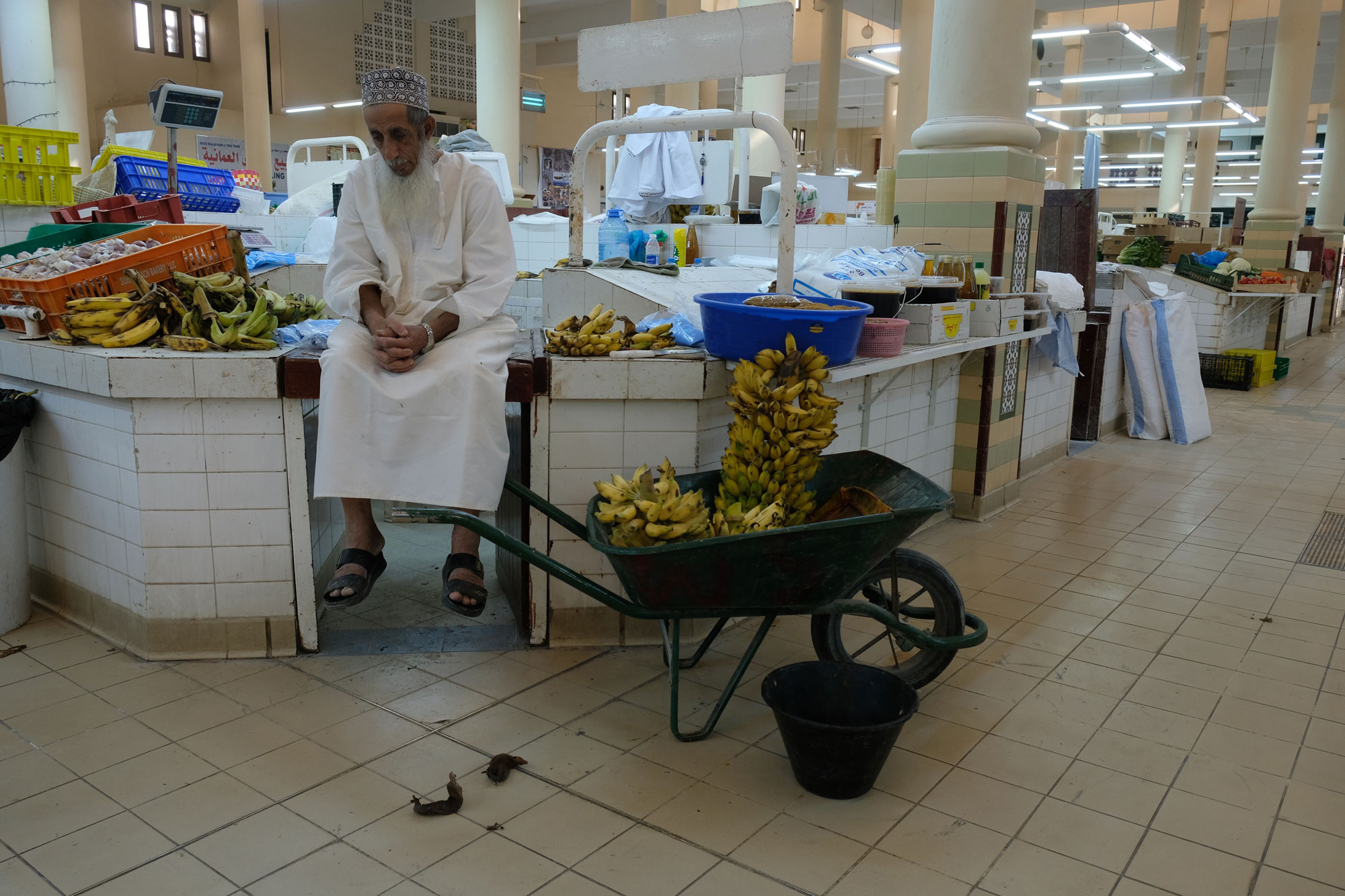
The Nizwa souq.
A car, or some other transport, is essential to visit other points of interest in the region. Tanuf, about 20 kilometres north of Nizwa, is an ancient village of which ruins are the only remaining witness. A new village built next to it has palm gardens and is obviously some sort of oasis. Al Hoota cave (entry OMR 6.500) is another interesting visit, a further 17 km away from Tanuf. The trip to the cave itself is first with a light rail, and then walking in groups with a guide. As it was off season, there were very few visitors, and hence the restaurant was closed and the snack shop had no food.
A little further afield is the town of Jibreen, close to the UNESCO World Heritage site Bahla Fort. When I arrived at Jibreen Hotel, surprisingly it started raining. The rain, however, was full of dust, so my white rented car suddenly had lots of black spots. A room was OMR 16 a night including breakfast. Bahla Fort, unfortunately, was closed to visitors, so I only had a chance of walking around.
Most amazing, however, was a visit to Al Jabal al Akhtar and the Anantara Hotel. Built on a cliff overlooking the valley and featured in the BBC series “Amazing Hotels,” you can enjoy a pot of tea for three rials (USD 8) while dipping your feet in a swimming pool on the cliff overlooking the valley. If you fancy staying at the establishment, rooms start at around 300 US dollars a night. The hot season is not the greatest for views, as sand dust creates a haze that reduces the visibility. November is supposed to be a better choice, weather is cooler, visibility is much greater, but there are also many more visitors. The plateau on which the hotel and nearby villages lie, is around 10-15 degrees cooler than the scorching planes of Nizwa. It is 32 km from the town of Birkr with a police check point at the bottom of the hill, as authorities only allow 4WDs. I rented a 4WD with a driver from Birkr where I parked the saloon car, and paid the driver Hilal 35 rials. At Birkr you also find parts of the Aflaj Irrigation System, a UNESCO World Heritage Site.
A visit to Oman cannot be without a night in the desert. So, my last night before returning to the capital would be at Desert Nights Camp. Dinner and breakfast included at around 60 rials a night. The camp itself is located at around 11 kms from the nearest country road. I was advised to park my car at the nearby mosque, and the staff would come to pick me up in a 4WD. However, I was foolish enough to ignore this and started driving on the dirt road towards the camp. At first the road looked fairly ok, but true enough, after about 4 kms my car got stuck in the sand. It was afternoon, with the sun shining from a clear sky and 45 degrees outside. Reassuringly I had noticed a red 4WD following me for quite some distance, it stopped as I got stuck and a tall bearded guy in local dress came up to assist me. We agreed that the best thing was to call the hotel, and certainly, in twenty minutes they were here to help. It turned out that the guy in the red car was a Norwegian of Somali descent who with his wife were going to the same camp. All the guy from the hotel did was to lower the pressure of my tyres and asked me to drive on, but at high speed. I followed his advice and, and at 60 km/hour I arrived safely at the camp ten minutes later. Early the next morning I returned to the country road speeding away.
[September 2018]

